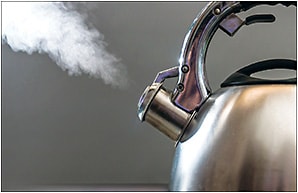“Is my patient’s dry eye disease better yet?”
Treating ocular surface disease isn’t a one and done type process. We know that dry eye disease (DED) is a chronic, progressive disease that will continue to change like the seasons, or even with the seasons. So, how do we know when patients are on the correct treatment, when their DED is progressing, and when to switch gears? The short answer is by intermittently following up with the patient. Let’s dig a little deeper.
FOLLOW-UP PROTOCOL
I tend to have a short leash on my new or severe DED patients. Typically, a follow-up appointment is scheduled at four to six weeks with every new patient or when introducing a new therapy. Once improvement is noted, I extend visits out to three months. When my patients are stable, I monitor them every six months to one year because, as we know, DED can change and symptoms may flare up. For those patients for whom I prescribe a topical corticosteroid to use intermittently for flare ups, once I am sure they are not a steroid responder, I have these patients return every four to six months for IOP monitoring.
So, what happens at these appointments?
- Dry eye questionnaires. These help to monitor improvement in patient symptoms.
- Detailed note-taking/documentation. Within the patient’s EHR, I take good, detailed notes regarding complaints to keep tabs on what may or may not be working. This includes an organized list of tried therapies (when and duration), as well as any in-office treatments. (See bit.ly/InOfficeDEDTherapy .) Additionally, the original DED questionnaires and meibography readings are located within the patient’s record.
- Slit lamp exam. Utilizing the “look, lift, push, and pull of the lids,” vital dyes, and corneal sensitivity testing help determine whether the patient is improving.
- Point-of-care testing. Tear osmolarity or MMP-9 level testing is often done at the initial evaluation and then at follow-up visits after beginning treatment, but it may not be redone at every appointment. Additionally, I re-evaluate meibography every six months or more, depending on the patient’s initial imaging, treatments, and level of meibomian gland dysfunction.

TREATMENT APPROACH
In cases where the patient’s signs and symptoms are improving, I, obviously, stick with the prescribed treatment.
When I note a flare up, I prescribe two-to-four-week topical corticosteroid use to calm the ocular surface inflammation. My discussion with the patient: “You are OK to use this steroid for the allotted time, but if symptoms worsen at any time, or you have no improvement after a few days, schedule an appointment.”
In cases in which neither DED signs nor symptoms are improving, I stop and assess my data on the patient: Was I not aggressive enough in my initial treatment? What are the underlying causes; is it aqueous deficient, evaporative DED, or a mix? Does the patient have concomitant, uncontrolled systemic issues, such as Sjögren’s syndrome, that are adding to the problem? Then, I move up the next rung on the treatment ladder of the “ASCRS Preoperative OSD Algorithm.” (See bit.ly/ASCRSDEDALG .)
In cases in which the patient has improvement in signs or symptoms alone, I check corneal sensitivity, as they may have early neurotrophic keratitis (think stain with no pain) or neuropathic corneal pain (think pain with no stain). After this determination, I, again, move forward with the most appropriate treatment. OM




